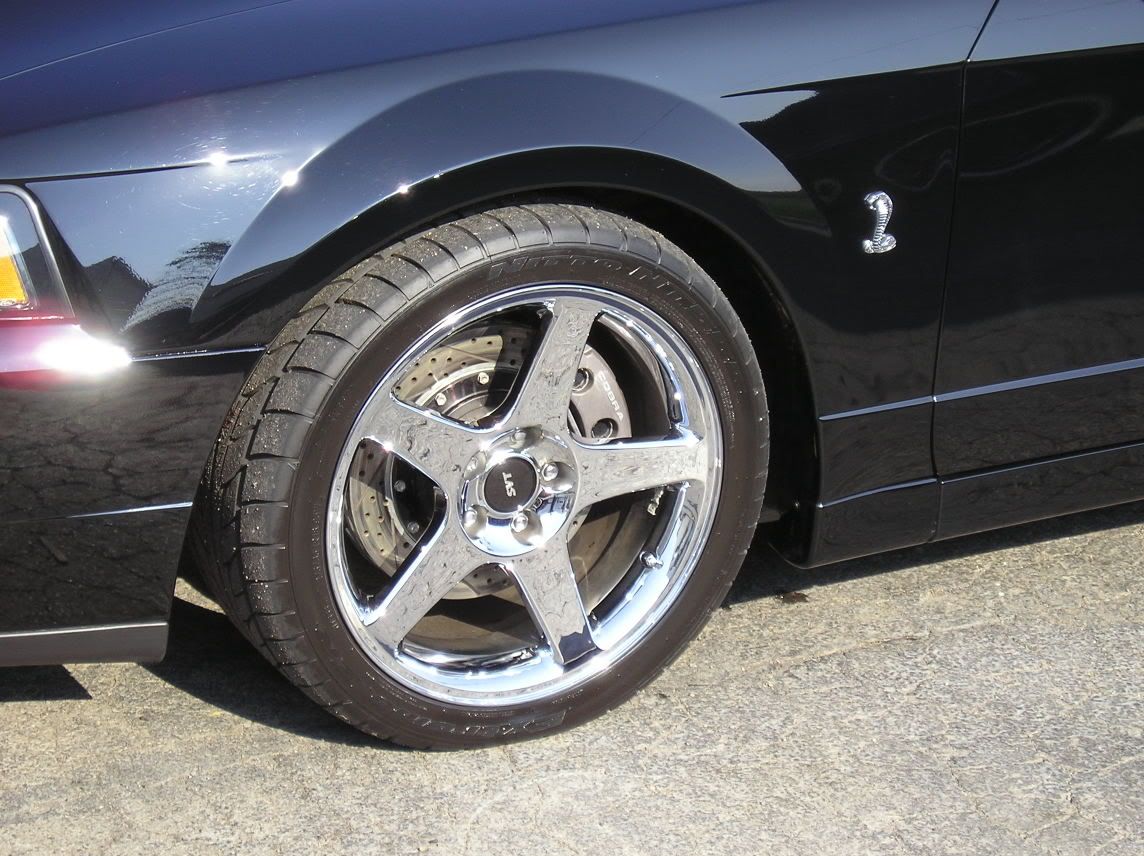blu_fuz
New Member Classroom vulture
Those look awesome polished..... :drool:
Hoping they pop out behind some black rims!Those look awesome polished..... :drool:
I doubt you'd say that after you've stopped on them and seen how they look in person. I have and the looks worth it, it's not like any of us are open track addicts from what I can tell.I've always loved the calipers but I couldnt stand losing all that rotor surface area to holes.
Hoping they pop out behind some black rims!
- amyn
I doubt you'd say that after you've stopped on them and seen how they look in person. I have and the looks worth it, it's not like any of us are open track addicts from what I can tell.
I'd probably say it regardless. If the car stopped well I'd wonder how well it would have stopped with more surface area for the pads to grab. To me slotted rotors look just as trick as drilled rotors so to see them both on a street car makes me smile.

http://www.buildafastercar.com/tech/Drilled-Brake-Rotors Just some interesting brake info. It includes drilled rotors too!
http://www.buildafastercar.com/tech/Drilled-Brake-Rotors Just some interesting brake info. It includes drilled rotors too!
Just stop, please. You don't know the first thing about brakes, so don't go spreading these psuedo-technical statements because someone else like you might latch on to them and spread them further. Much like the old "cast-in" rotor holes myth spread as well.
Rotor to pad surface area has ZERO affect in and of itself on brake torque generation. Further, slotted rotors will remove just as much if not more surface contact area as drilled rotors. There are several reasons that make drilled rotors less than desirable in almost all modern brake applications, but the decreased surface contact certainly isn't one of them.
I never said it had anything to do with stopping power.
I'd probably say it regardless. If the car stopped well I'd wonder how well it would have stopped with more surface area for the pads to grab.
The problem I have with holes is that it weakens the rotor and limits the amount of heat it can hold.
Those are the facts from years of brake work with autocross and track cars.
Yes they look better to some people but there is a reason that when you go to an autocross or track day they discourage drilled rotors. I've seen cracks in all types of rotors but the cross drilled ones are the worst looking and the only type I've ever seen fail and destroy a wheel while out on the course.
Yes, drilling holes in the rotor brings stress concentrations that tends to bring the normal heat checking cracks from heavy use to occur right at the holes first. Thermal capacity of the rotor is minimally affected, as the % of mass removed from the rotor is minimal, something on the order of 2-3% typically. Much more mass is removed when switching to a 2-piece rotor.
I'm not defending drilled rotors at all, I just want you to get your facts straight, and stop spreading psuedo-tech. Drilled rotors have thier place, both when appearance is the only factor, and even in true performance applications where the rotor designer plans on having holes from the beginning (a particular GM engineer has published a few excellent SAE papers on the subject ). I've seen all types of rotors crack, and I've seen plain-face rotors crack and fail as well. I've never seen a rotor fail on a street/track/race car when it was properly inspected and maintained and replaced appropriately, even with drilled rotors. Regardless of thier construction, rotors are a consumable wear item, and should be inspected on a regular basis to see if they need replacement. (Granted, carbon-based rotor technology changes this game a bit).
